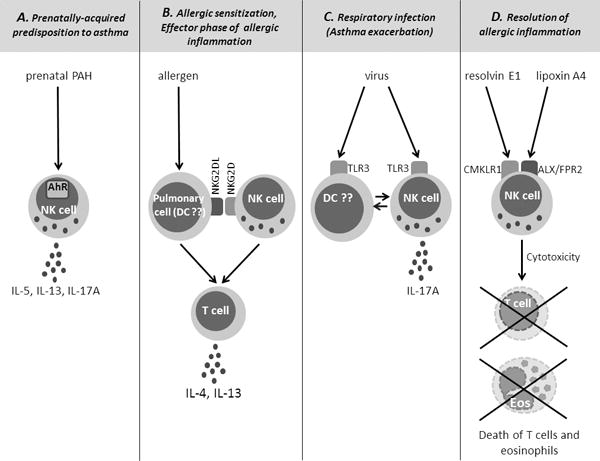Figure 1.

Proposed activation mechanisms and functions of NK cells in asthma.
A. NK cells are activated in utero as a result of maternal exposure to polycyclic aromatic hydrocarbons (PAH). PAH go through the placenta and activate fetal NK cell precursors through the transcriptional factor aryl hydrocarbon receptor (AhR). Prenatally-primed NK cells produce IL-5, IL-13 and IL-17A and mediate predisposition to asthma. B. Allergens activate NK cells through induction of ligands for the NK cell receptor NKG2D on the surface of pulmonary cells (e.g. dendritic cells (DC)). NKG2DL recognition by NK cells is required for CD4 T cell differentiation into Th2 cells and allergic sensitization. NK cells also play a role in CD4 T cell activation during the effector phase of allergic inflammation. C. Viruses activate NK cells through Toll-like receptors (TLR), including TLR3. The activation process may be direct or indirect (through dendritic cells). Virally-activated NK cells produce IL-17A and contribute to asthma exacerbations. D. NK cells are also activated through the engagement of the Chemokine-like Receptor 1 (CMKLR1) and the Lipoxin A4 Receptor/Formyl Peptide Receptor 2 (ALX/FPR2) by pro-resolving lipid mediators resolvin E1 and lipoxin A4, respectively. Lipid-activated NK cells kill T cells and eosinophils (Eos) and mediate resolution of allergic inflammation.
